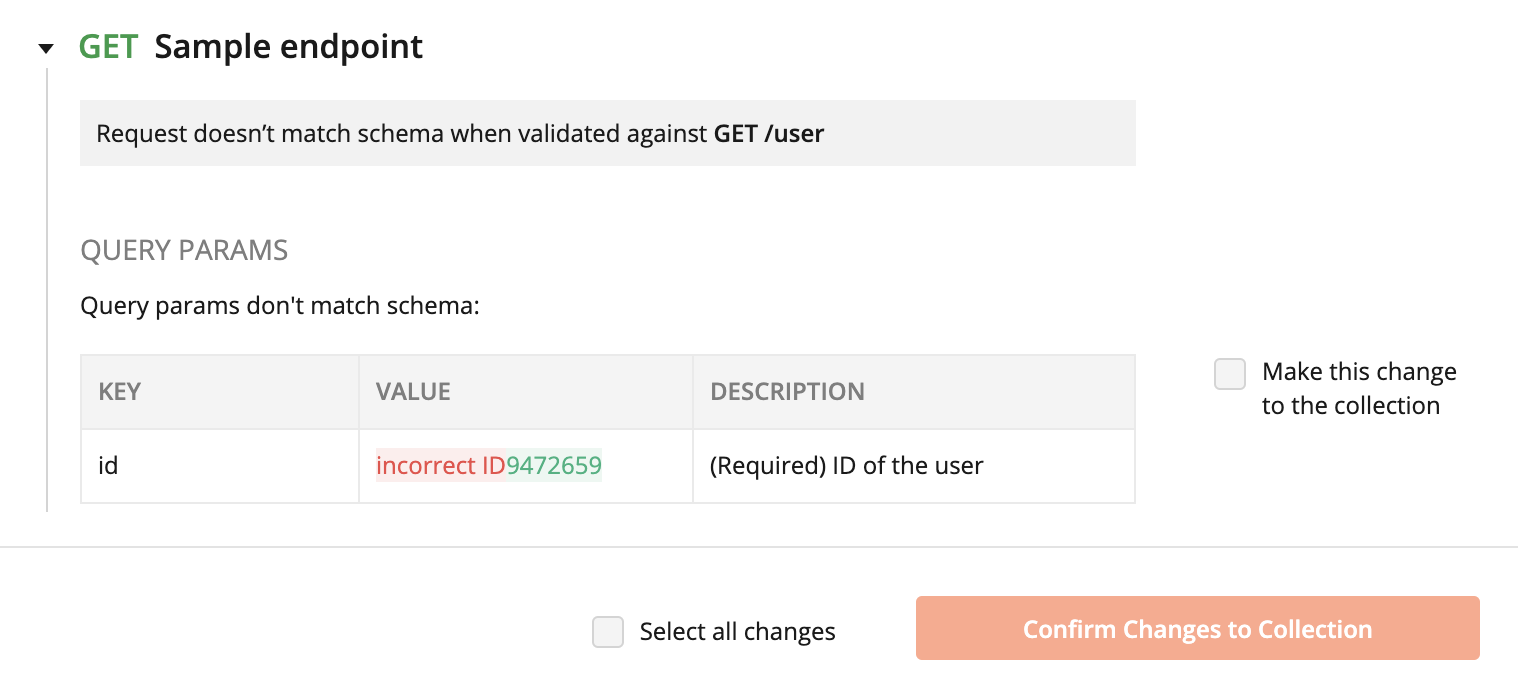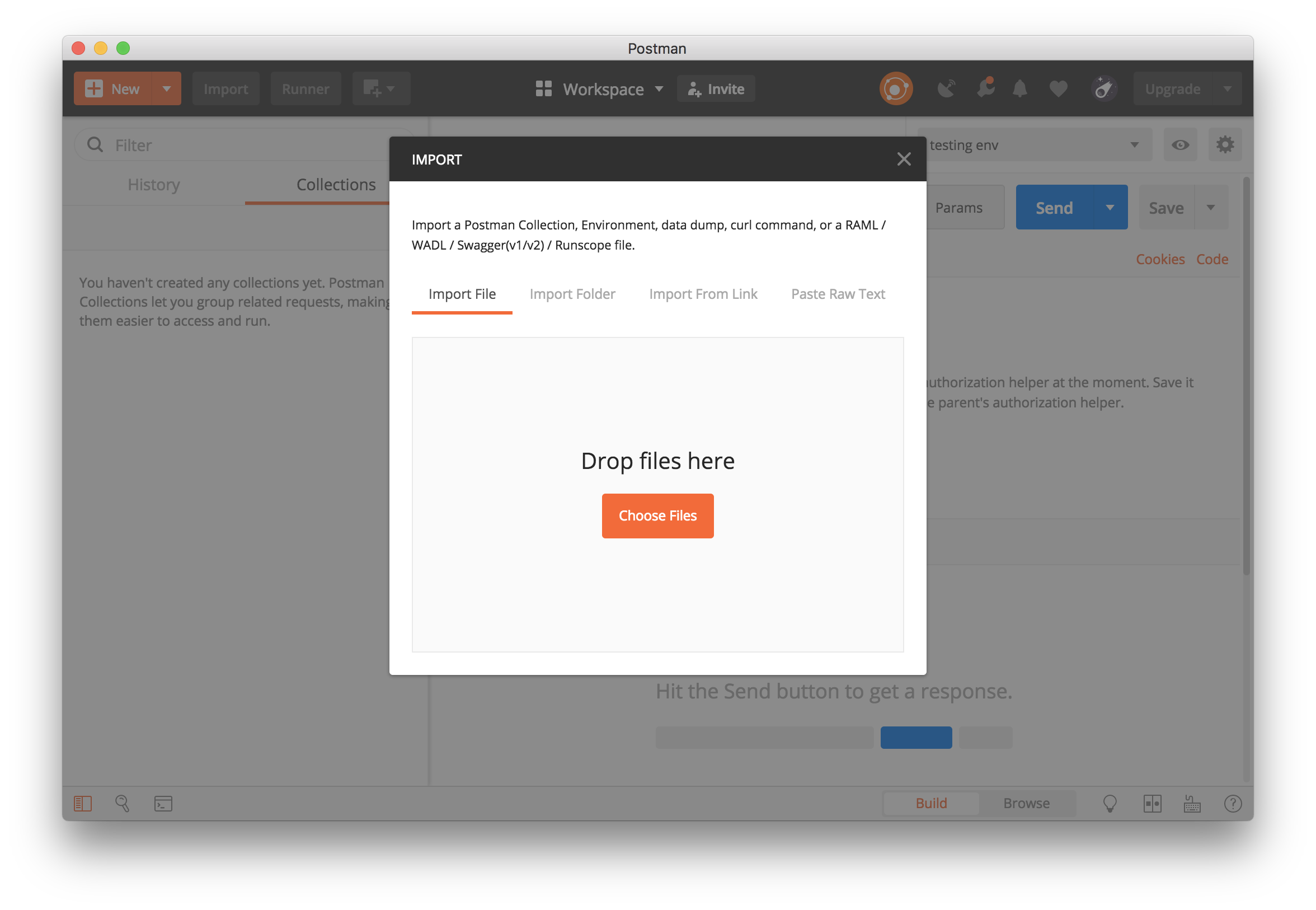
- #Convert postman collection to openapi how to
- #Convert postman collection to openapi install
- #Convert postman collection to openapi series
- #Convert postman collection to openapi download
#Convert postman collection to openapi install
To install Jmeter, you should follow these steps provided by this Blazemeter article Now your file will be successfully generated.

Then drag your exported collection file to the drop zone. When the form pop-up appears, select the default option POSTMAN. You could use Google, Github, or Linkedin for doing so, so no worries! After the login process, the home section will appear.

There, select the Features tab, and click on the Convert Postman to Jmetersection. You could also go to the main Loadium site. Now, we have to open a browser and go here. We have all the CRUD functionality of our Idea API if you remember. Our test suite will be generated from the Postman collection in the previous chapter.
#Convert postman collection to openapi how to
Today we will see in this brief tutorial how to create a Jmeter test suite from our collection using Loadium Import the collection to Loadium
#Convert postman collection to openapi series
You can directly paste your OpenAPI specification file inside the Open API Specification or Swagger file and it'll fill up all the others fields.In the previous article of this series, we learned how to create a Postman collection from our OpenAPI documentation.Ĭheck out the complete series if you missed it! Go on your Meta API account, select Catalog on API on the left menu bar and click on the button Add an API on the top right Step 4: import your new API inside Meta API Select the JSON format with Bundled references and click on Copy to clipboard Then, I can export my OpenAPI file from Stoplight by doing a right click on my file and select Export: To make my OpenAPI file cleaner, I've also removed the query parameter referring to the api_key on each endpoint. So I'll configure a new Security Schemas that'll use an API key with the name api_key inside a query param.Īnd I set this Security Schema as the main one inside Global Security

Since each API is different, the following examples only apply to SimilarWeb.īut for each APIs, you'll have to configure a Security Schema as use this schema in Global SecurityĪfter examining the SimilarWeb API, I figure out that SimilarWeb use an API key as a query params in each endpoint, like this:
#Convert postman collection to openapi download
You can download it, create a new local project and then import the OpenAPI file. If you know the OpenAPI standard, you can add the authentication manually to the file (or with your favorite tool), but in this example, we'll use the Stoplight app to edit it. Most of the time, the authentication is now configured inside the OpenAPI file, because the transformer can't detect the right authentication method. Step 3: check authentication on the generated OpenAPI file Now you have an OpenAPI specification file, but we need to check the authentication. You may encounter some warning inside the API: you can skip them and click on Proceed to download the OpenAPI file. Once on the transformation popup, choose the downloaded Postman collection on your computer, select OpenAPI v3.0 (JSON) and click on Convert You'll have to create a free account on their website to do it. The will the APIMatic Transformer tool to convert our Postman collection to an OpenAPI specification file. You will be able to save the file on your computer. Select the recommended version and click on Export. Then, click on the three dot in front of the collection and select Export If you have a web page from Postman like this, you can click Run in Postman to download the collection inside your Postman client (or the web app): The first step is to download this collection.

Step 1: export the Postman collection įor this example, we'll use the SimilarWeb API that provide a Postman collection. This is a step-by-step guide to help you to convert and import a Postman collection inside Meta API. Maybe you also use a Postman collection for your own APIs.īrace yourself: you can convert them to create a OpenAPI specification file and import your API inside Meta API! Some providers don't provide an OpenAPI specification file but a Postman collection.


 0 kommentar(er)
0 kommentar(er)
